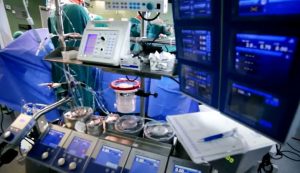3D-Printed Functional Human Brain Tissue Unveiled by Researchers
A groundbreaking achievement by a team of scientists at the University of Wisconsin–Madison has brought forth the first-ever 3D-printed brain tissue capable of growing and functioning like typical brain tissue.
This breakthrough holds immense promise for advancing our understanding of the brain’s complexities and potentially revolutionizing the study and treatment of various neurological disorders, including Alzheimer’s and Parkinson’s disease.
Revolutionizing Neural Networks
The key innovation lies in the unique 3D-printing process developed by the research team, as outlined in their publication in the journal Cell Stem Cell. Departing from traditional vertical layering, the scientists adopted a horizontal approach, arranging brain cells—neurons derived from induced pluripotent stem cells—in a softer “bio-ink” gel.
Unlike previous attempts, this method allowed the cells to be situated next to each other, akin to pencils laid out on a tabletop.
The resulting tissue maintains sufficient structure to hold together while being soft enough to enable the neurons to grow into each other, fostering communication and interaction—a feat not previously achieved in 3D-printed brain tissues.
The success of this innovative approach is evident in the cells’ ability to communicate, send signals, and form networks resembling human brains.
The printed neurons not only establish connections within each layer but also extend across layers. These networks exhibit intricate interactions through neurotransmitters and even integrate with support cells added to the printed tissue.
Breakthrough 3D-Printing

One of the standout features of this 3D-printing technique is its precision, allowing unparalleled control over the types and arrangement of cells within the printed tissue. This level of control surpasses brain organoids, providing a more organized and defined system for studying how the human brain network operates under various conditions.
“This could change the way we look at stem cell biology, neuroscience, and the pathogenesis of many neurological and psychiatric disorders,” emphasizes Su-Chun Zhang, professor of neuroscience and neurology at UW–Madison’s Waisman Center. The ability to design and print brain tissue with specific characteristics opens new avenues for studying the intricate workings of the human brain and developing targeted treatments for neurological conditions.
The University of Wisconsin’s groundbreaking achievement in 3D-printing functional brain tissue marks a pivotal moment in neuroscience.
This innovative approach not only provides a unique platform for studying the complexities of the human brain but also holds significant potential for advancing therapeutic interventions in the realm of neurological disorders.
As the scientific community delves deeper into this frontier, the implications for healthcare and our understanding of the brain’s intricacies are bound to be profound.

